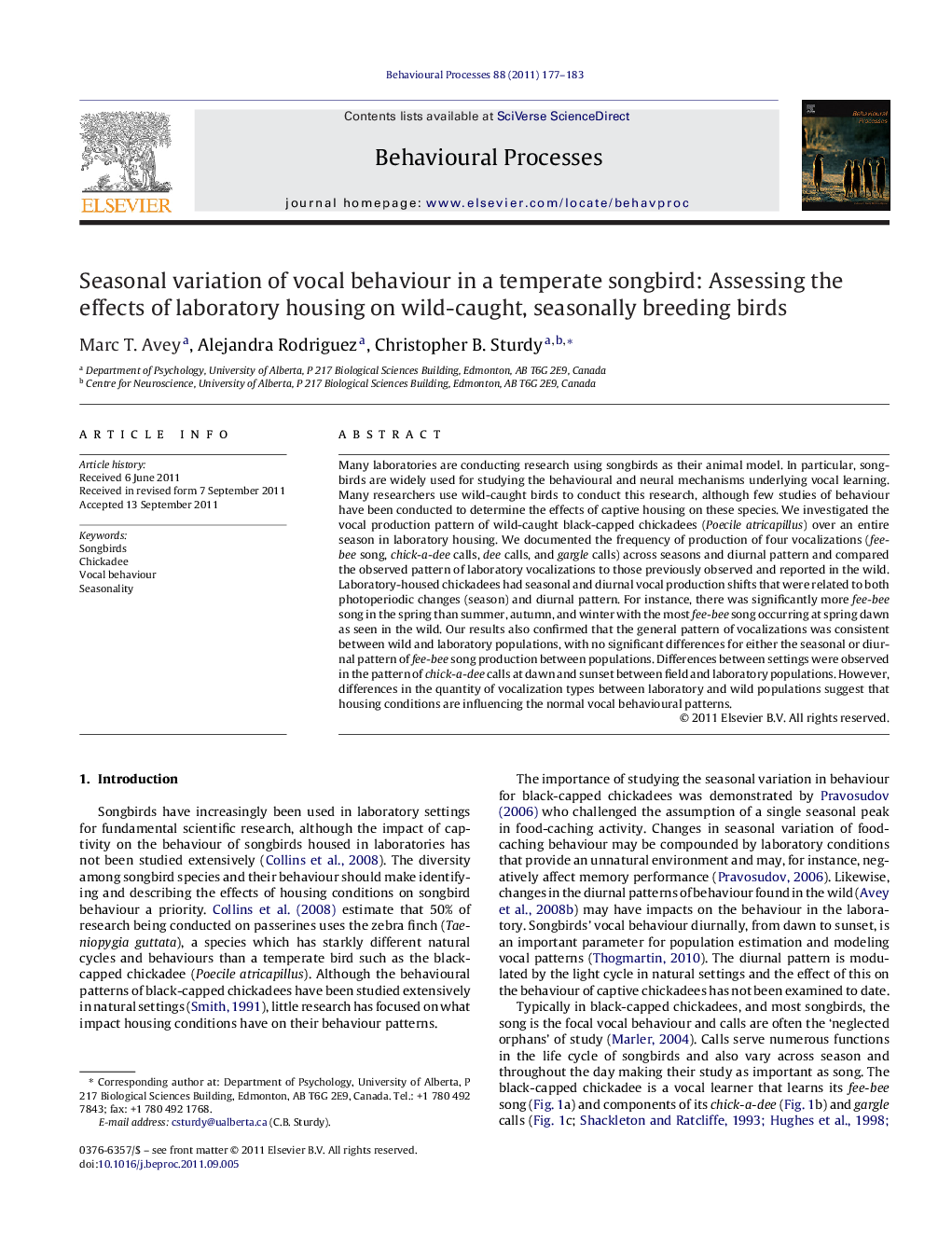| کد مقاله | کد نشریه | سال انتشار | مقاله انگلیسی | نسخه تمام متن |
|---|---|---|---|---|
| 2427075 | 1105941 | 2011 | 7 صفحه PDF | دانلود رایگان |

Many laboratories are conducting research using songbirds as their animal model. In particular, songbirds are widely used for studying the behavioural and neural mechanisms underlying vocal learning. Many researchers use wild-caught birds to conduct this research, although few studies of behaviour have been conducted to determine the effects of captive housing on these species. We investigated the vocal production pattern of wild-caught black-capped chickadees (Poecile atricapillus) over an entire season in laboratory housing. We documented the frequency of production of four vocalizations (fee-bee song, chick-a-dee calls, dee calls, and gargle calls) across seasons and diurnal pattern and compared the observed pattern of laboratory vocalizations to those previously observed and reported in the wild. Laboratory-housed chickadees had seasonal and diurnal vocal production shifts that were related to both photoperiodic changes (season) and diurnal pattern. For instance, there was significantly more fee-bee song in the spring than summer, autumn, and winter with the most fee-bee song occurring at spring dawn as seen in the wild. Our results also confirmed that the general pattern of vocalizations was consistent between wild and laboratory populations, with no significant differences for either the seasonal or diurnal pattern of fee-bee song production between populations. Differences between settings were observed in the pattern of chick-a-dee calls at dawn and sunset between field and laboratory populations. However, differences in the quantity of vocalization types between laboratory and wild populations suggest that housing conditions are influencing the normal vocal behavioural patterns.
► Laboratory-housed chickadees had seasonal and diurnal vocal production shifts related to photoperiodic changes (season) and diurnal pattern.
► We observed significantly more fee-bee song in the spring than summer, autumn, and winter with the most fee-bee song occurring at spring dawn as seen in the wild.
► Results confirmed that the general pattern of vocalizations was consistent between wild and laboratory populations.
Journal: Behavioural Processes - Volume 88, Issue 3, November 2011, Pages 177–183